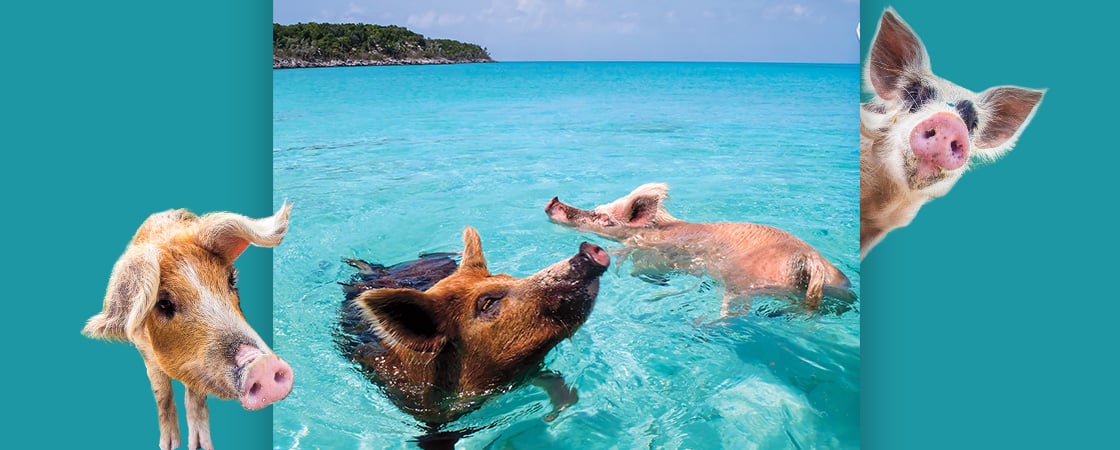Klein & Hubert/NaturePL.com
Let’s visit a tropical beach. The white sand is warm under your toes. Clear blue water stretches out in all directions. Palm trees sway in the breeze.
But then you realize you’re not alone. You hear noises coming from the shallow water. Is that . . . oinking?
Suddenly, you see the island’s only residents: about 20 swimming pigs!
Welcome to Big Major Cay, also known as Pig Beach.
Let’s visit a tropical beach. The white sand is warm under your toes. There is clear blue water all around you. Palm trees sway in the breeze.
But then you realize you’re not alone. You hear noises coming from the shallow water. Is that oinking?
Suddenly, you see the island’s only residents: about 20 swimming pigs!
Welcome to Big Major Cay. It’s also known as Pig Beach.

